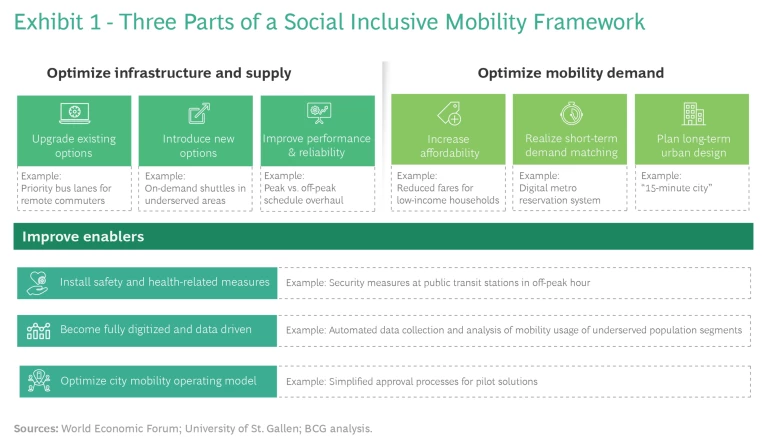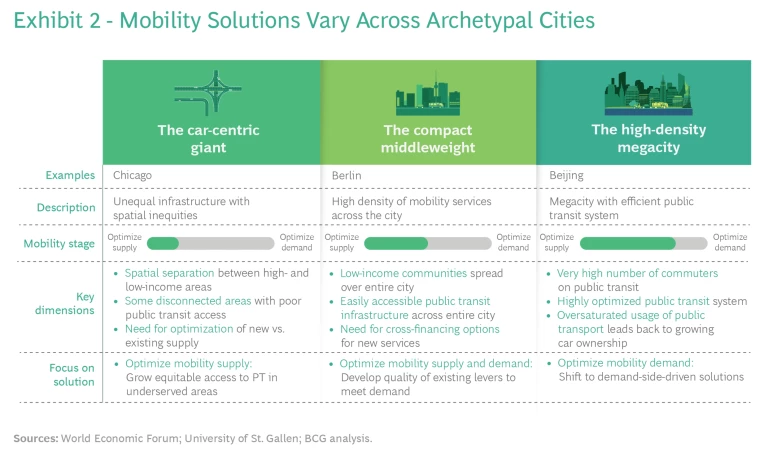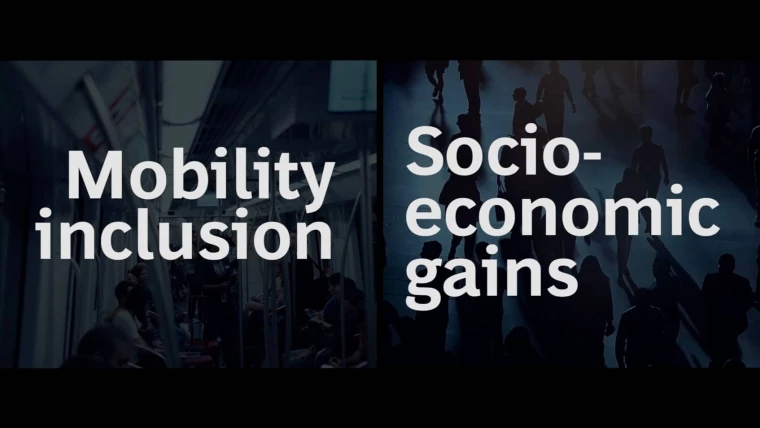Modeling Equity Through Transportation Planning
Evidence is mounting that mobility is a crucial factor in socioeconomic progress. According to a new global transportation study by Boston Consulting Group (BCG), the World Economic Forum (WEF), and the University of St. Gallen, shorter commuting times are a reliable indicator of an individual’s ability to escape poverty. And during the past two years, as the global COVID-19 pandemic has raged, people living in so-called mobility deserts (areas with constrained mobility access) have been disproportionately vulnerable to the virus as well.
Yet, the role of transportation is too often overlooked in discussions about social inclusion—a term that describes the ability and opportunity for people and groups to take part in society and enjoy an equitable quality of life. As a result, mobility decision makers have fallen behind in efforts to broaden the physical and socioeconomic reach of their systems. This is especially troubling in an era when emerging new technologies—such as on-demand shuttles, shared mobility apps, and autonomous vehicles—have the potential to radically extend the contours of transportation and contribute to socioeconomic gains.
The purpose of our study was to explore the shortcomings and successes of mobility today and to provide solutions for making our transport systems serve as a lever for socioeconomic growth in the coming years. We examined global mobility systems of all sizes and types and interviewed dozens of transport policymakers and experts in both the public sector and the private sector. As a result, we identified a holistic solution framework to improve social inclusion through mobility. (See Exhibit 1.)
We studied three archetypical cities and their transportation ecosystems at different stages of maturity:
- Chicago, a car-centric city
- Berlin, a compact middleweight city
- Beijing, a high-density megacity
We simulated mobility improvements chiefly targeted at neglected population segments to determine which ones would have the greatest socioeconomic impact. (See Exhibit 2.) These outcomes could then serve as a starting point for other cities with similar characteristics.
Our findings include the following:
- In car-centric cities, with a high concentration of good jobs in the city center, expanding equitable access to downtown for low-income communities through public transportation improvements or connecting mobility deserts to existing rail stations via on-demand solutions (such as shuttles, shared bicycles, and e-scooters) makes a huge difference in people’s lives. For instance, such simple mobility initiatives as adding first- and last-mile shuttles in Chicago increased the number of jobs accessible to underserved communities by up to 90%.
- In compact middleweight cities, with a high density of jobs and population generally distributed across the urban area, making new mobility modes more affordable and attractive (to buoy demand) in low-income communities is essential. In Berlin, differentiated service levels on public transit, similar to business class seats on trains, increased the share of public transit trips by 11% while generating 28% higher revenue for the public system.
- In high-density megacities, optimizing mobility demand by making tedious commutes more palatable improves quality of life. Beijing, for instance, installed digital platforms for people to reserve time slots for fast-track access to public transportation—which cut commuting times by 20%. In addition, distributing jobs more evenly across megacities to ultimately reduce travel demand provides long-term returns.
We’ve only scratched the surface of the new ideas needed for cities everywhere to enjoy socially inclusive mobility ecosystems that buttress socioeconomic growth. But now that the link between transportation and standards of living or quality of life is clearly evident, we believe that the future of mobility will provide real returns felt by more and more people in all social and economic strata.









